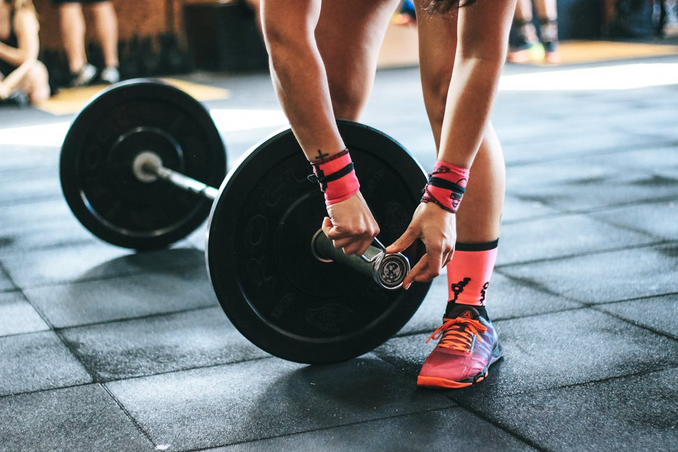Embarking on your weightlifting journey can feel like stepping into uncharted territory. With its clanking weights and grunting enthusiasts, the gym might seem intimidating at first—but it doesn’t have to be! Whether you’re looking to build strength, enhance your fitness routine, or boost your confidence, mastering safe lifting techniques is the essential foundation you need. In this comprehensive guide, we’ll walk you through the basics of proper form and technique and also arm you with tips for avoiding common pitfalls that can lead to injuries.
Start With a Plan

Before you hit the gym, it is essential to have a clear plan. Weightlifting isn’t just about lifting as much weight as possible; it’s about building strength progressively while avoiding injury. For beginners, focusing on full-body workouts that target major muscle groups is key. Safe Weightlifting exercises for seniors, however, should mainly focus on the back, leg, hip, arm, and abdominal muscles. These could include exercises like squats, deadlifts, and bench presses. A balanced routine ensures that you’re working your body evenly, which helps prevent muscle imbalances and reduces the risk of injury. You don’t need to overcomplicate things; a simple three-day-a-week program can be very effective for beginners.
Focus on Proper Form
When it comes to weightlifting, form is everything. Lifting with improper technique limits your progress and significantly increases your risk of injury. Learning the correct posture and movement patterns for each exercise is essential. For example, when performing a squat, your knees should never extend beyond your toes, and you should maintain a neutral spine to prevent strain on your back. If you’re unsure about your form, consider asking a trainer for guidance or using lighter weights until comfortable. Starting with the correct form ensures you’ll get stronger without hurting yourself.
Start With Lighter Weights
Many beginners make the mistake of trying to lift heavy weights right off the bat, but this can lead to strain and injury. It’s important to start light and focus on building strength and mastering your form first. Lighter weights allow you to practice the movement and ensure you do it right. Once the form is down, you can gradually increase the weight over time. The key is to challenge yourself without overloading your muscles too soon. A good rule of thumb is to use a weight that you can lift with good form for about 8-12 repetitions. If you can easily do more, it’s time to increase your weight.
Warm up and Cool Down
Just like any physical activity, weightlifting requires proper preparation to reduce the risk of injury. Warming up is essential, as it helps get your blood flowing and your muscles ready for work. This could involve light cardio for 5-10 minutes, followed by dynamic stretches to loosen up the muscles you plan to target. After your workout, don’t skip the cool down. Gentle stretching helps prevent stiffness, improves flexibility, and promotes muscle recovery. Proper warm-ups and cool-downs are simple but effective ways to protect your body and maximize your performance.
Listen to Your Body
One of the most important things to remember as a beginner is to listen to your body. Weightlifting should challenge you, but it should never cause pain. If you feel sharp pain or discomfort during any exercise, stop immediately. It could be a sign that you’re doing something wrong or pushing your body too hard. Soreness is normal, especially when just starting, but you should always differentiate between discomfort from hard work and pain that signals injury. If you’re unsure, consulting with a fitness professional is worth ensuring you’re lifting safely.
Rest
Getting caught up in the excitement of weightlifting is easy, but rest and recovery are just as important as the lifting itself. Muscles become stronger during rest periods, not during the actual workout. As a beginner, aim to allow 48 hours of rest between weightlifting sessions for the same muscle group. Getting enough sleep, eating nutrient-dense foods, and staying hydrated are all critical components of recovery. Taking the time to recover ensures that you can lift effectively and safely, and it will help prevent burnout.
Track Your Progress

Tracking your improvements can keep you motivated as you progress in your weightlifting journey. Whether it’s adding a little more weight to your lifts, increasing the number of repetitions, or simply feeling stronger over time, recognizing your growth is essential. Keep a workout journal or use a fitness app to monitor your progress and celebrate the small wins along the way. Tracking your gains provides motivation and helps you see where adjustments may be needed in your routine.
Weightlifting can be incredibly rewarding, but it’s essential to approach it with patience and care. Building strength doesn’t happen overnight, and safety should always come first. By focusing on proper form, starting with lighter weights, warming up, listening to your body, and allowing for rest and recovery, you’ll be well on your way to achieving your fitness goals.

